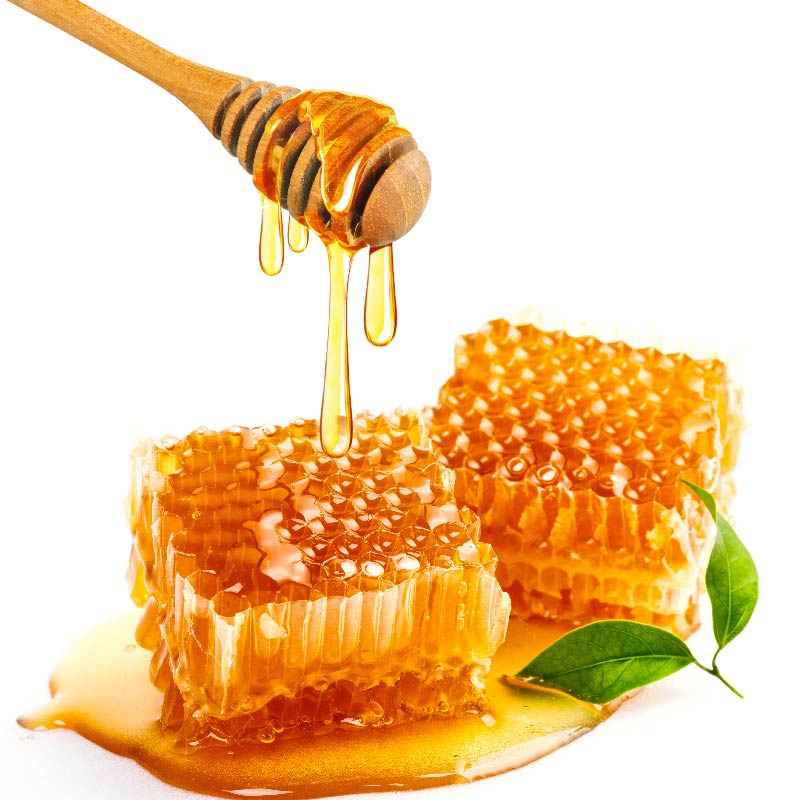Honey, the golden nectar produced by bees from the nectar of flowers, has been cherished by humans for thousands of years. Beyond its delightful taste, honey boasts a rich history, diverse nutritional profile, and a wide range of uses, both culinary and medicinal.
A Journey Through History:
The history of honey is as rich and diverse as the golden nectar itself, spanning thousands of years and cultures around the world. Here’s a glimpse into the fascinating journey of honey through history:
Ancient Beginnings:
The earliest evidence of honey consumption dates back to prehistoric times, with cave paintings depicting humans collecting honey from wild beehives. Ancient civilizations, including the Egyptians, Greeks, and Romans, revered honey for its medicinal properties and used it in religious ceremonies, embalming practices, and as a sweet treat. In ancient Egypt, honey was considered a divine gift from the gods and was used as a form of currency, as well as a sweetener and preservative.
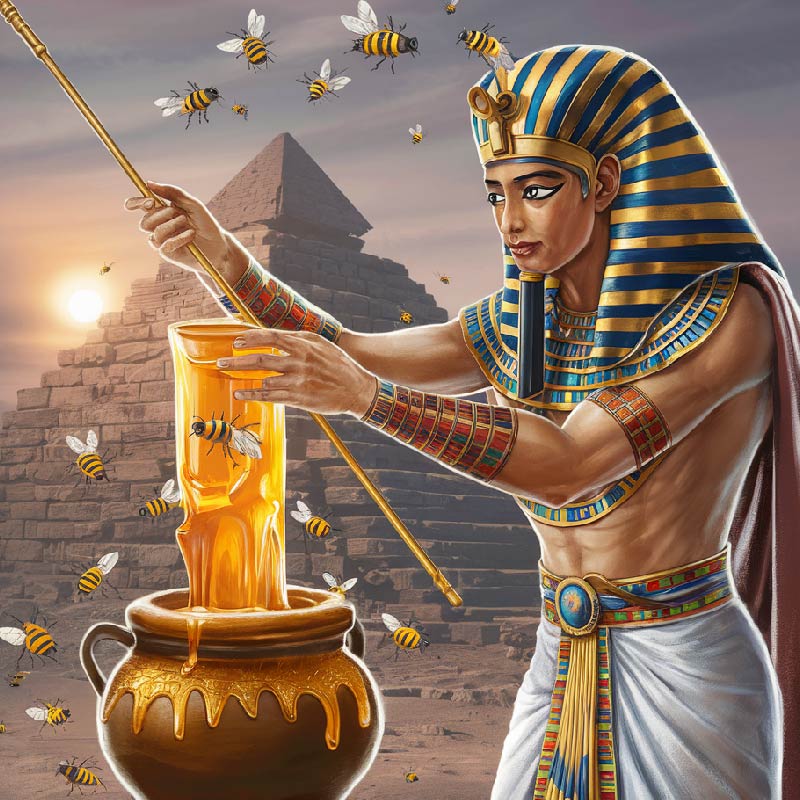
Medieval Europe:
Honey continued to play a significant role in medieval Europe, where it was used to sweeten food and beverages and as a primary source of sugar before the widespread cultivation of sugarcane. Monasteries became centers of beekeeping, with monks tending to hives and producing honey for both culinary and medicinal purposes.
The importance of honey in medieval society is reflected in literature and folklore, with references to honey appearing in works such as Geoffrey Chaucer’s “Canterbury Tales.”
Exploration and Trade:
During the Age of Exploration, European explorers introduced honeybees to the Americas, where they thrived and became an integral part of indigenous cultures.
Honey became a valuable commodity in global trade networks, with European merchants trading honey from hives in Africa, Asia, and the Middle East.
The introduction of European honeybees to new regions had both positive and negative impacts on local ecosystems, leading to competition with native bee species in some areas.
Modern Times:
The development of modern beekeeping techniques in the 19th century revolutionized honey production, allowing for larger-scale cultivation and harvesting of honey.
Innovations such as movable-frame hives, invented by beekeeper Lorenzo L. Langstroth in 1851, improved the efficiency of honey extraction and hive management.
Honey production became an important industry in many countries, with beekeepers using techniques such as selective breeding and hive management to increase honey yields and improve bee health.
Cultural Significance:
Throughout history, honey has held cultural significance in diverse societies around the world, symbolizing sweetness, fertility, and abundance.
Honey features prominently in religious rituals and ceremonies, from Hindu weddings where couples share honey during the marriage ceremony to Jewish traditions that include honey in Rosh Hashanah celebrations to symbolize a sweet new year.
In modern times, honey remains a beloved ingredient in cuisines worldwide, cherished for its unique flavor, nutritional benefits, and versatility in cooking and baking.
Bees are flying insects known for their role in pollination and honey production. They belong to the order Hymenoptera, which also includes ants and wasps. Bees are best known for their intricate social structures and their vital role in the ecosystem. There are thousands of species of bees, but the most well-known are honey bees (genus Apis) and bumblebees (genus Bombus).
The Humble Honey Bee
Honey bees, in particular, live in colonies organized around a queen bee, worker bees, and drones. They build intricate nests or hives where they store honey, raise their young, and coordinate activities such as foraging for nectar and pollen. Honey bees are essential pollinators, playing a crucial role in the reproduction of flowering plants, including many crops that humans rely on for food.
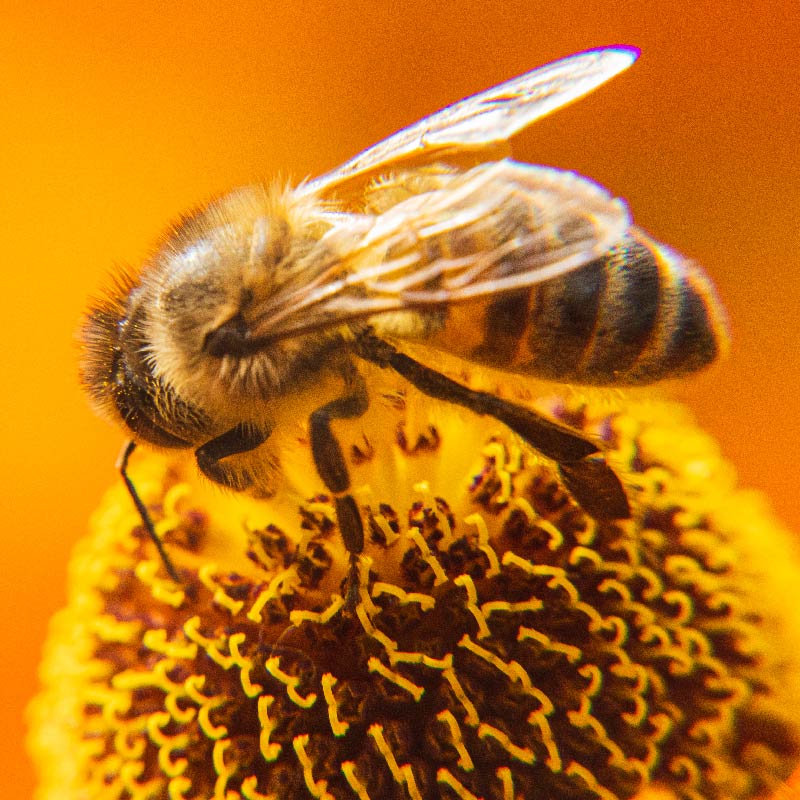
Bumblebees, on the other hand, are also social insects but generally have smaller colonies compared to honey bees. They are known for their distinctive fuzzy appearance and their ability to “buzz pollinate” certain flowers by vibrating their flight muscles at high frequencies.
Both honey bees and bumblebees are highly valued for their pollination services, which contribute to the diversity and abundance of plants in ecosystems around the world. They are also important contributors to agriculture, helping to pollinate many crops, fruits, and vegetables.
Bee’s Anatomy
Head:
Bees have large compound eyes, antennae for sensing their environment, and mouthparts adapted for collecting nectar and pollen.
Thorax:
The thorax contains the wings and legs of the bee. Bees have two pairs of wings that enable them to fly and six legs used for walking, gripping surfaces, and collecting pollen.
Abdomen:
The abdomen houses vital organs such as the digestive and reproductive systems. It also contains the sting apparatus in female bees, which is modified from an ovipositor (egg-laying organ).
How Bees Produce Honey:
Foraging for Nectar:
Worker bees leave the hive in search of flowers containing nectar, a sugary liquid produced by flowers to attract pollinators.
Using their proboscis (long, tube-like tongue), bees extract nectar from flowers and store it in their honey stomach, a separate compartment in their abdomen.
Returning to the Hive:
Once a bee has collected a full load of nectar, it returns to the hive.
Inside the hive, the forager passes the nectar to other worker bees through a process called trophallaxis, where bees transfer food between individuals by mouth-to-mouth feeding.
Processing the Nectar:
Worker bees within the hive further process the nectar by adding enzymes to it.
These enzymes, particularly invertase, break down the complex sugars in the nectar (such as sucrose) into simpler sugars (glucose and fructose), making it easier to digest and less prone to spoilage.
Storing the Honey:
Once the nectar has been sufficiently processed, worker bees deposit it into honeycomb cells.
The bees fan their wings over the honeycomb to evaporate excess moisture from the nectar, reducing its water content to around 17-20%, which helps prevent fermentation.
Capping the Honey:
Once the honey has reached the desired moisture content, the bees cap the honeycomb cells with beeswax to seal them.
Sealed honeycomb cells serve as storage units for the hive, providing a long-term food source for the colony, especially during periods of scarcity.
Harvesting Honey:
Beekeepers harvest honey by carefully removing the honeycomb frames from the hive.
The honeycomb is then uncapped to release the honey, which can be extracted using various methods, such as centrifugal force or pressing.
The process of honey production is a remarkable feat of cooperation and organization within a bee colony. It not only provides sustenance for the bees but also yields a delicious and nutritious product enjoyed by humans worldwide.
Honey – The Nutritional Powerhouse
Honey is not just a delicious natural sweetener; it’s also packed with nutrients and health-promoting compounds. Here’s a breakdown of the nutritional information of honey per 1 tablespoon (21 grams):
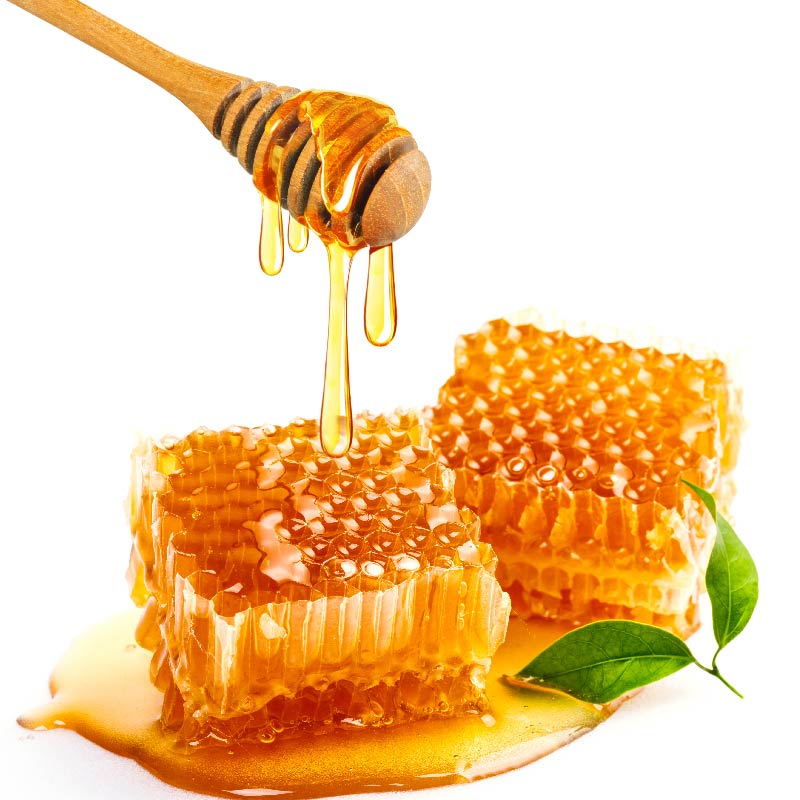
Calories: Honey is relatively high in calories, providing about 64 calories per tablespoon. This makes it an energy-dense food, which can be beneficial for providing quick energy, especially for athletes or those needing a quick energy boost.
Carbohydrates: The primary component of honey is carbohydrates, mainly in the form of natural sugars like glucose and fructose. A tablespoon of honey contains around 17.3 grams of carbohydrates, primarily from sugars.
Sugar: Honey is composed mainly of natural sugars, including glucose and fructose. These sugars give honey its sweet taste and make it a popular natural sweetener.
Protein and Fat: Honey contains minimal amounts of protein and fat, with less than 0.1 grams of both per tablespoon. While honey is not a significant source of protein or fat, it can still contribute to overall nutrient intake.
Vitamins and Minerals: Honey contains small amounts of vitamins and minerals, including vitamin C, calcium, iron, potassium, and zinc. While these nutrients are present in relatively small quantities, they still contribute to honey’s overall nutritional profile.
Antioxidants: Honey contains various antioxidants, including flavonoids and phenolic compounds, which have been linked to various health benefits, including reduced inflammation and improved heart health. The antioxidant content of honey can vary depending on factors such as floral source and processing methods.
Other Compounds: Honey also contains trace amounts of other bioactive compounds, such as enzymes, amino acids, and organic acids, which may contribute to its health-promoting properties.
Honey has many versitile uses in both culinary and medicinal applications. From sweetening sauces and marinades to adding depth to baked goods, honey enhances the flavor of a wide range of dishes. Medicinally, honey has been used to soothe sore throats, heal wounds, and even as a natural cough suppressant.
It’s also important to note that while honey does offer some nutritional benefits, it is still high in calories and natural sugars. Therefore, it should be consumed in moderation as part of a balanced diet. Additionally, infants under the age of one should not consume honey due to the risk of botulism, a rare but serious illness caused by bacteria that can be found in honey.
Honey is a versatile ingredient used in various products, both culinary and non-culinary. Here are some examples:
Honey – What Is It Good For?
Food Products:
Honey Spread: A delicious alternative to jams or jellies, honey spread is made by combining honey with other ingredients like fruits, nuts, or spices.
Honey Mustard: A popular condiment made by blending honey with mustard, vinegar, and spices. It’s often used as a dipping sauce for pretzels, a glaze for meats, or a dressing for salads.
Granola Bars: Many granola bar recipes include honey as a natural sweetener and binding agent, helping to hold the ingredients together.
Honey-Sweetened Beverages: Honey is sometimes used to sweeten beverages like teas, smoothies, and cocktails, adding a natural sweetness and depth of flavor.
Beauty and Skincare Products:
Honey Face Masks: Honey is known for its moisturizing and antibacterial properties, making it a popular ingredient in homemade face masks. It can help hydrate the skin, reduce acne, and soothe irritation.
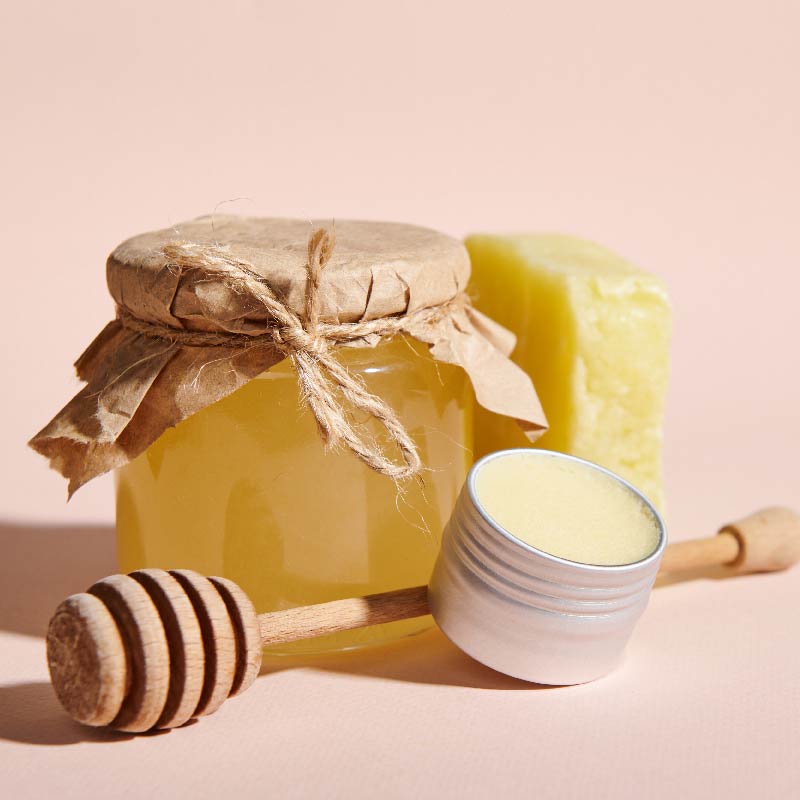
Honey Lip Balm: Honey is often incorporated into lip balms and lip glosses for its hydrating and healing properties. It helps to nourish chapped lips and keep them soft and smooth.
Honey Soap: Honey is used in soap-making for its moisturizing and antibacterial benefits. Honey-infused soaps can help cleanse and hydrate the skin, leaving it feeling soft and supple.
Medicinal Products:
Cough Syrup: Honey has long been used as a natural remedy for soothing sore throats and coughs. Honey-based cough syrups are often combined with herbs or other soothing ingredients to provide relief from cold symptoms.
Wound Dressings: Honey has antimicrobial properties that can help prevent infections and promote wound healing. Medicated honey dressings are used in some medical settings to treat burns, ulcers, and other skin wounds.
Household Products:
Beeswax Candles: Beeswax, a natural byproduct of honey production, is used to make candles. Beeswax candles burn cleanly and emit a warm, honey-like aroma when lit.
Wood Polish: Beeswax-based furniture polish is prized for its ability to nourish and protect wood surfaces. It creates a natural, lustrous finish and helps repel dust and moisture.
Fun Facts About Honey:
- Honey never spoils! Archaeologists have discovered pots of honey in ancient Egyptian tombs that are still perfectly edible after thousands of years.
- A single honeybee produces only about 1/12th of a teaspoon of honey in its lifetime.
- Honeybees must visit about 2 million flowers and fly over 55,000 miles to produce just one pound of honey.
- The flavor and color of honey vary depending on the nectar source. Different types of honey, such as clover, wildflower, and orange blossom, offer distinct flavors and aromas.
Pros and Cons of Using Honey:
Pros:
- Natural Sweetener: Unlike refined sugars, honey is a natural sweetener that contains beneficial nutrients.
- Antioxidant Properties: Honey is rich in antioxidants, which help protect cells from damage caused by free radicals.
- Medicinal Benefits: Raw honey has antimicrobial properties and can be used topically to treat wounds and burns.
- Versatility: From cooking to skincare, honey’s versatility makes it a valuable addition to any pantry.
Cons:
- High in Calories: While honey offers nutritional benefits, it’s still high in calories and should be consumed in moderation, especially for those watching their calorie intake.
- Risk of Contamination: Raw honey may contain harmful bacteria such as botulism spores, which can pose a risk, particularly to infants.
- Not Vegan: Since honey is a product of bees, it’s not considered vegan-friendly.
In conclusion, honey is more than just a sweet treat; it’s a symbol of nature’s bounty and a treasure trove of nutrition and flavor. Whether enjoyed drizzled over yogurt, used in cooking, or applied topically for skincare, honey continues to captivate and nourish us, just as it has for millennia.

